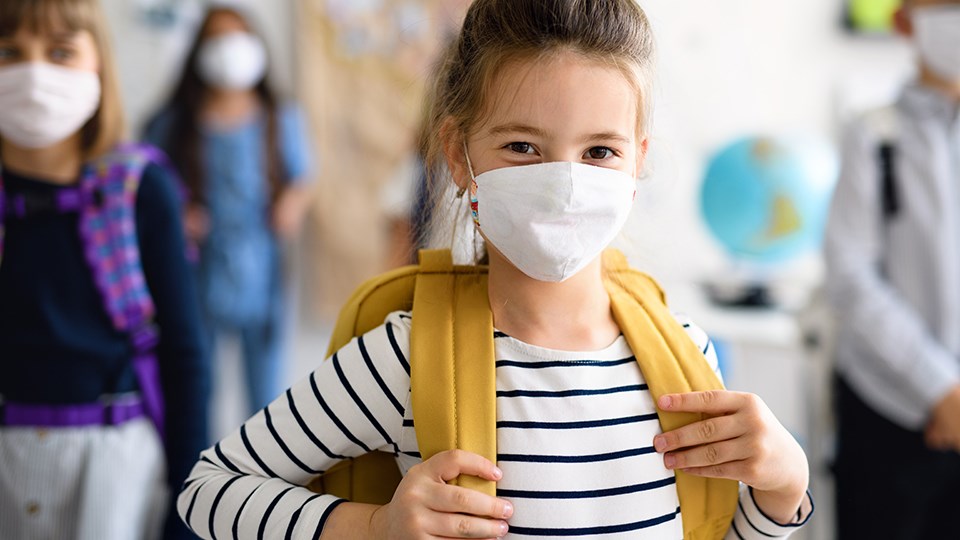As students head back to the classroom, keeping anyone with COVID-19 symptoms out of school is the first line of defense for a safe return, according to Porcupine Health Unit medical officer of health Dr. Lianne Catton.
In the Timmins area, most students start heading back to the classroom Sept. 8 for the first time since March.
Ahead of that start, Catton talked today about what the return will look like, measures to keep students and staff safe, and what happens if someone in the school setting catches the virus.
Measures that have been promoted throughout the pandemic continue to be a key part of the messaging.
Catton said staying home when unwell and getting tested if you have symptoms, hand hygiene, cough and sneeze etiquette, masks and physical distancing are critical to keep the case numbers low in the region.
"We all need to remain vigilant and continue to follow these steps. Whether you are directly linked to the education system as a parent, a teacher, a staff member or not, we all play a role in a safe return to school, and the families and students who have determined that in-person learning is best for them need and deserve our attention and support,” she said.
Each school board, and individual schools have COVID-19 plans.
Catton emphasized that the daily screening requirement for students and staff is key.
"Many cases have been very mild, there may only be one mild symptom. They may be things that we would commonly account to a cold,” she said, adding a small symptom could be a runny nose.
"Keeping anyone with symptoms out of school is the most important and first line of defense to a safe return to school."
She said cohorts are also being developed. The Ministry of Education guidelines sets it as a maximum of 50 for elementary schools, and 100 for secondary schools.
“This is meant to designate and limit the group of classmates or teachers that a given student will be exposed to throughout the day. This is something that public health will be able to use, if needed, should we have any case investigation or contact follow up that’s necessary in a school setting,” she said.
To maintain physical distancing, she said furniture may be removed from classrooms, and there could be staggered lunches, recesses or breaks to limit student contact with students outside their cohort. In the hallways, there could be direction signs, and there will also be increased hand sanitization and hand washing for students and staff.
For busing, Catton supports the Ministry of Education's recommendations.
On the bus, she said there will be hand sanitization. When there can't be one child per seat, there may be opportunities to sit with a sibling, a class cohort, or at least a child from the same school.
She said it's also an opportunity to promote active transportation to get to school such as biking or walking.
If there's a positive case at a school, Catton said the health unit will follow up with the case and conduct an investigation. Public health then calls all close contacts identified and provides guidance based on the level of potential exposure, which she said is the procedure they've followed throughout the pandemic.
Similar to how they've dealt with long term care cases, she said the health unit will also be in contact with the school boards and individual schools as part of the investigation. They'll work through the cohort and staff list, and let people know about any potential exposures or if someone may need to be go home.
“It is important to recognize that one positive case alone does not mean that there is an outbreak declared, nor does it mean that everyone needs to go home or that the school will close. It will be based on the assessment of the individual case and the comprehensive investigation process. There may be a time when schools do need to close more broadly as they did in the first wave if community and provincial infection rates increase, and we will be continuing to monitor that and assess that as we move forward,” she said.
An outbreak at a school, Catton explained, may be declared if there are two or more cases in students or staff.
"At this point it’s incredibly important to note, it is not just the number of cases, it is that there has to be an epidemiological link between those cases within a 14-day period where we think that at least one case may have acquired their infection within the school,” she said.
Before going back to school, Catton also suggests parents talk to their children about the changes, as well as things like not sharing snacks or masks, and how to connect with friends without touching.
In the Porcupine Health Unit area, there have been 73 confirmed COVID-19 cases. Of those, 64 are recovered and nine people have died.
To access COVID-19 testing, call your health care provider or the health unit.
The COVID-19 information line is open weekdays from 9 a.m. to 4:30 p.m. and can be reached at 705-267-1181 or 1-800-461-1818.
There are COVID-19 assessment centres in Timmins, Cochrane, Iroquois Falls, Kapuskasing, Smooth Rock Falls, Hearst, and Hornepayne.



